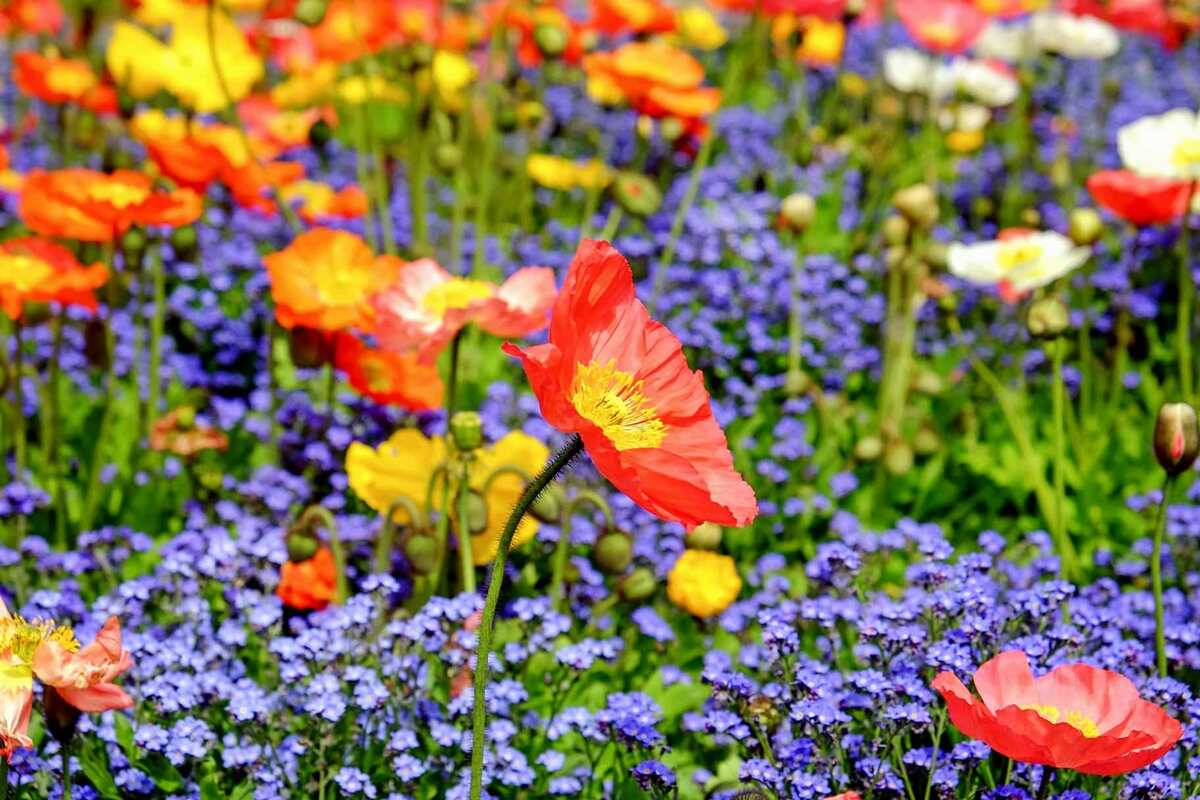
Most of us aren’t Claude Monet. The French artist, best known for his watercolors, created magnificent wildflower gardens on the land around his Giverny home just outside Paris. This helpful beginner’s guide to wildflower gardens ought to bring you one step closer to creating an artistic garden of your own.
Not many of us have the kind of land Monet had, but plenty of us have urges similar to Monet’s to have a wildflower garden. As your own private meadow, a wildflower garden can be an exquisite combination of color, visual diversity, pollinators, and an invitation to birds, bees, and other wildlife that create a kind of living art.
There are countless ways to create a garden design, so if you’re feeling a little lost, we’re here to show you how to start a wildflower garden that Monet himself would love. Here are nine wildflower garden tips to bring out the best in your yard:
1. Here Comes the Sun
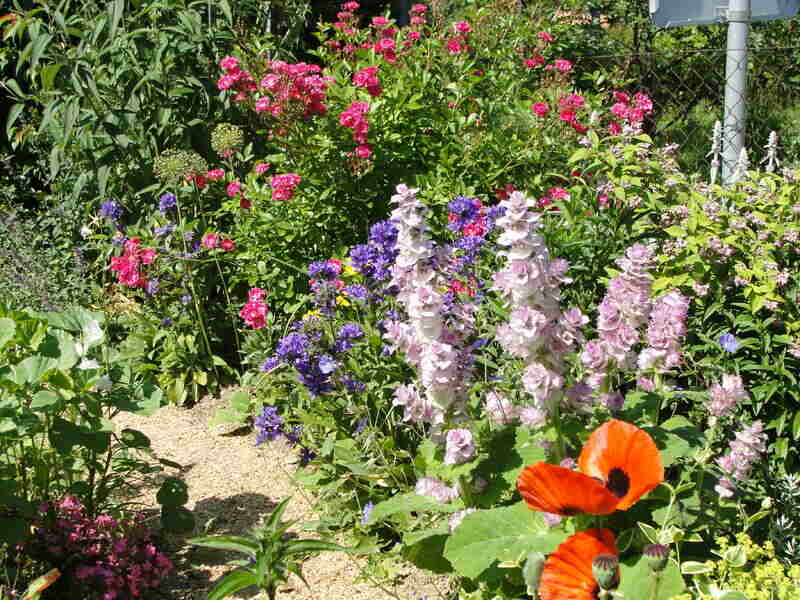
In much of the United States, a good six hours a day’s worth of sunlight is the ticket to a stunning wildflower garden, regardless of size.
Wildflower seed and seed mix packaging should tell you how much sunlight is required for the seeds you’ll be planting:
- If it says full sun, that’s six or more hours of direct sunlight each day.
- Those marked partial sun are asking for four to six hours of daily direct sun.
- Although rare, there are some wildflower seed packets that will call for full shade. Those will germinate best when started indoors under grow lights before being transplanted to an outside spot that gets less than four hours of direct sunlight daily.
However, those rules do not hold in much of the Western U.S. In much of the West, the elevation is higher, and that means the afternoon sun is stronger. And in the case of wildflowers, the gardener can get by with less sunlight for the same impact. For example:
- For full sun, four or more hours of afternoon sun will suffice.
- For partial sun, the morning sun mixed with the afternoon shade works best.
And with the rare full shade direction, start indoors. When transplanting, move to an area getting less than three hours of sunlight daily.
2. Enhance Your Soil
Given that in nature, wildflowers will find a way to thrive almost anywhere, there’s a natural presumption that any old soil will do. That’s only true to a point, however.
While marginal soil with low nitrogen content will do for many wildflowers, the growth and lifespan of most wildflowers are enhanced by well-drained and composted garden loam. That is particularly true the higher in altitude the garden is located.
The higher the location, the less topsoil you’re likely to find, and it will be both more acidic or more alkaline while low in organic material. To combat that at any altitude:
- Add organic matter like fully decomposed compost.
- Add nutrients like nitrogen and phosphorus.
- Test soil pH each spring.
If you are in the midst of a major landscaping project, like adding a walkway or installing a swimming pool, you may find yourself with piles of soil just sitting there. Don’t be afraid to tap into that as part of your soil base or your wildflower project.
3. Pick the Best Spot for Your Wildflowers
If you have a large outdoor space with which to work, a meadow makes plenty of sense as you scope out your backyard wildflower garden. However, not everyone has that kind of space as the default spot for a large garden. That’s why we’ve gathered some suggestions to create the perfect wildflower backyard, even in small areas:
- Bordering a fence where sunlight is in abundance.
- Bordering the sidewalk. This creates a nice visual space as well as a de facto organic fence once the wildflowers have matured. Taller species are best both here and alongside fences.
- Bordering a garden path. This is a good spot for lower-growing varieties.
- On the deck. If you have room on a terrace or deck, a planter box with wildflowers can be an excellent spot to add color and attract birds, bees, and butterflies to your garden.
- Behind a flower bed. Complement your flower bed with wildflowers behind them. It’s a nice way to provide a rear border and add more than a dash of color.
- Create a wildflower bed. In the case of a small yard, you can build or buy a smallish wildflower garden bed that will fit your living space. As the flowers grow, they most likely will spill over the sides, which creates a nice look.
4. Create Charm With Signature Additions

Wildflowers can be glorious on their own. But to enjoy them to their fullest, you might want to make them part of a greater whole.
Nice additions include:
- A winding path carved through the middle of your wildflower meadow. A wooden walkway or a path with paver stones or crunchy gravel will help create a look that will lure you into the wildflowers.
- A birdbath surrounded by wildflowers is going to get a lot of business from songbirds, bees, and all sorts of welcome visitors. Pollinators and wildflowers go together.
- A wooden insect house will attract all kinds of beneficial insects, including bees, butterflies, ladybugs, and pleasant critters that already are naturally drawn to wildflowers.
- The addition of some rock features can make the package stand out. As a rock wall, fence, or an eye-catching boulder fits into your flower garden, it will set off nicely the colors of the flowers that will grow up around it.
- An arbor can serve as a walkway up to your house and will set the entire structure off nicely to the passing eye. Should you not have the room for that, you might consider a bench covered by an arbor, an ever-so-attractive place to sit and enjoy the garden.
5. Select Your Wildflowers
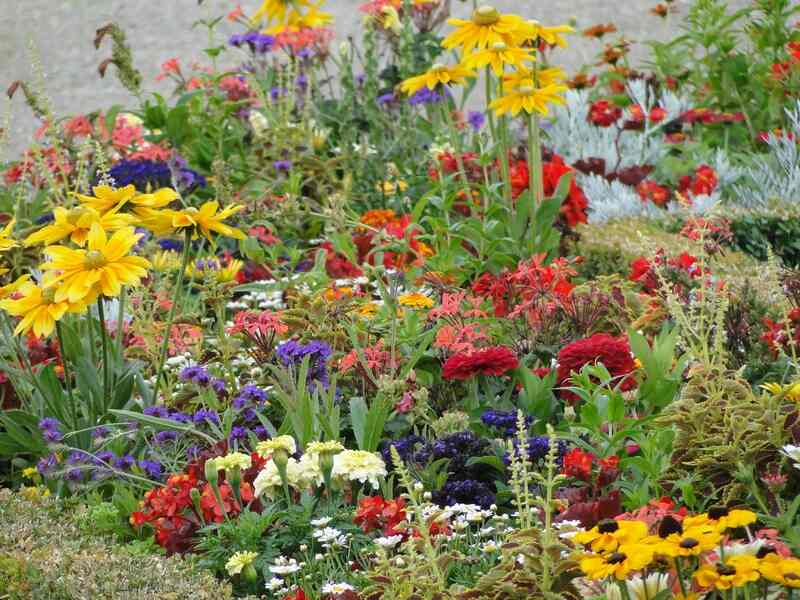
The gardener has the option to buy seeds of any one particular wildflower, but some form of mixing and matching seems to work best for most of us.
There are a number of combinations that can be bought in a premixed set. But if you are out to create your own look, here are some favorite combinations you can purchase separately and plant together:
- Lance leaf Coreopsis & blue flax: There is something special in the way the blues and the yellows stand out in the sunlight.
- Texas bluebonnet & snapdragon: The blue and purple bases are striking, and this combination attracts pollinators.
- Zinnias & cosmos: The pinks and purples here are particular favorites of bees.
- Cosmos & sunflowers: The tall yellow of the sunflower and the pink of the cosmos can be stunning.
- Daisies & lupine: The purple and white blooms are intense, year after year.
- Red poppy & Lanceleaf coreopsis: The reds of the poppy and the yellow of the coreopsis here are eye-popping.
- Black-eyed Susan & Echinacea: While the flowers’ shapes are very different, the purple and pink of the Echinacea and the yellow of the black-eyed Susans is quite a vision.
When planting a stone with wildflower seed mixes — the “stone” is a clay pellet holding seeds — the clay protects the seeds from hungry birds, insects, and other animals. Once the clay pellet gets wet, the seeds inside grow and will eventually sprout and thrive.
6. Grow Native Plants
When planting a wildflower garden, native and regional plants are almost always going to be your best friends. Native plants are drought-tolerant and well-adapted to the winds, rains, and weather where you live. That means less soil prep work and watering. Native wildflowers should be easy to come by since local nurseries are almost always going to have those on hand.
A secondary and substantial benefit of going with local and native species of wildflowers is that they are likely to attract and support beneficial pollinators in the area. Yellows will lure bees; reds are favored by hummingbirds. And why not create a butterfly garden with native plants and enjoy the little visitors?
7. Consider Perennial Wildflowers
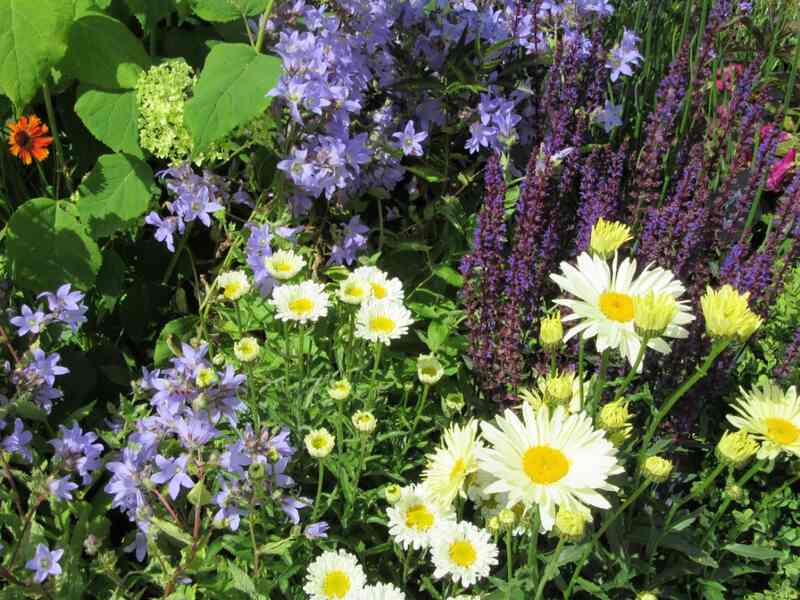
If you aim for a low-maintenance garden, go for perennials. When you create a perennial wildflower garden, you know the plants will return year after year. Annual plants won’t rebloom the following year, so you’ll likely need to replant them annually — unless you opt for an annual plant that self-sows each year.
Growing flowering perennials can cut down on the number of yearly plantings you will have to do. Most perennial wildflowers are extra-hardy. For the most part, once they are planted, you can enjoy their beauty without extra time spent working in the garden.
Some good options for perennial wildflowers are:
- Bee balm
- Bellflower
- Black-eyed Susan
- Blanket flower
- Blue flax
- Gayfeather
- Gloriosa daisy
- Lanceleaf coreopsis
- Lupine
- Mexican hat flower
- Milkweed
- Poppy
- Primrose
- Purple coneflower
- Queen Anne’s lace
- Shasta daisies
- Sweet William
- Tickseed
- Yarrow
8. Care for Your Wildflower Garden
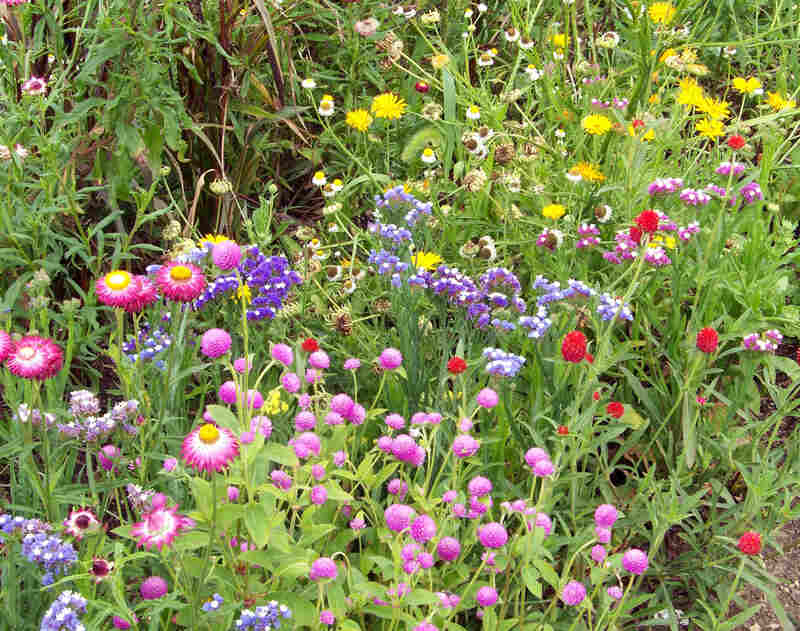
Caring for your wildflowers is not complicated but requires dedication. We’ll guide you through the basics of wildflower care:
Water Appropriately
Let’s start with watering. And let’s stop there, too — in the case of wildflowers, it’s easy to overwater. Take note of our tips so you can water your wildflowers without drowning them:
- The seeds need ample moisture to germinate and develop into healthy seedlings. Toward that end, keep the area given to wildflowers moist for the first 4 to 6 weeks. In many areas, natural rain may do the trick. If not, supplemental watering may be needed.
- Once the wildflowers begin to germinate, don’t allow the area to dry out completely, but don’t oversaturate. Oversaturation can lead the seedlings to die due to a lack of oxygen getting to the root system.
In the western U.S., watering during this time may need to be done daily. In the desert southwest, you may need to water several times a day until the plants are established. In the east, central, and southern areas of the country, watering once every few days may be enough.
- Once the plants are established, some watering during dry spells may be needed, but it shouldn’t be much. And there should not be much weeding necessary because wildflowers grow densely and crowd out potential weeds.
Plant Fast Bloomers
Go into this wildflower process understanding that perennials won’t bloom the first year, so you might want to plant some other options for immediate impact. Here are some options for first-year blooming wildflowers for you:
- Perennial snapdragon (Antirrhinum braun-blanquetii)
- Anise hyssop (Agastache foeniculum)
- Indian blanket (Gaillardia pulchella)
- Lemon bee balm (Monarda citriodora)
- Partridge pea (Chamaecrista fasciculata)
- Tall verbena (Verbena bonariensis)
Overseed for Strength
Unusual weather conditions can affect your garden: Some seedlings may not grow, or other established plants may die due to heat stress. An occasional overseeding may be necessary every few years.
Overseeding consists of spreading new seeds over an existing lawn or meadow to fill in bare spots. This process can ensure your wildflower garden grows thick and hardier of heat, drought, and diseases.
Add Turfgrass
If you want to cover a large area with your wildflowers, you might want to consider adding some turf grasses. These will fill in thin spots while at the same time discouraging weeds. The best grasses for this purpose include hardy fescues in northern climates and Buffalograss or other native grasses in warmer areas.
Mow
In the late fall, after the annuals have gone to seed, mow the entire area down to a height between 4 and 6 inches. Doing this ensures that the seed heads drop, discouraging the growth of any woody perennials that might try to take over.
9. Know When to Plant Wildflowers
While it is possible to plant wildflowers in both the spring and fall, you might find the fall the best time to get at it. In the spring, you’ll be fighting an incursion of weeds; there will be less of that in the fall.
On the other hand, early spring planting gives the wildflowers a nice, long season to become established and set seed. If you opt for the fall, make sure you have 8 to 10 weeks before frost is due to kick in to give seeds time to self-sow.
FAQ About Wildflower Gardens
What are the Cons of a Wildflower Garden?
A wildflower garden can have unexpected cons, so be mindful of the following factors:
- Seed mixes can contain wildflowers that are not native to your area, in which case you may be introducing an invasive species to your garden.
- Non-native wildflower species can outbreed the native population, causing an impact on local herbivores and pollinators.
Can I Just Throw Wildflower Seeds in my Garden?
Technically, yes, you can throw wildflower seeds in your garden, but it is not the best method of planting wildflowers. Ideally, choose a spot where no other plants or grass are growing and prepare the soil to increase the seeds’ chances of success.
What is the Easiest Wildflower to Grow?
Here are three options for easy-to-grow wildflowers:
- Aster
- Columbine
- Cornflower
When to Call a Landscaping Pro
If installing your wildflower garden involves too much time and energy, consider handing the job over to a local landscaping professional. Discuss with them your landscaping needs and they can take care of the rest.
And remember, don’t let a dying, yellow lawn distract from your thriving wildflower garden. Connect with a local lawn care professional to keep your lawn in tip-top shape so that your whole yard is a sight to behold
Main Image Credit: Couleur / Pixnio / CC0